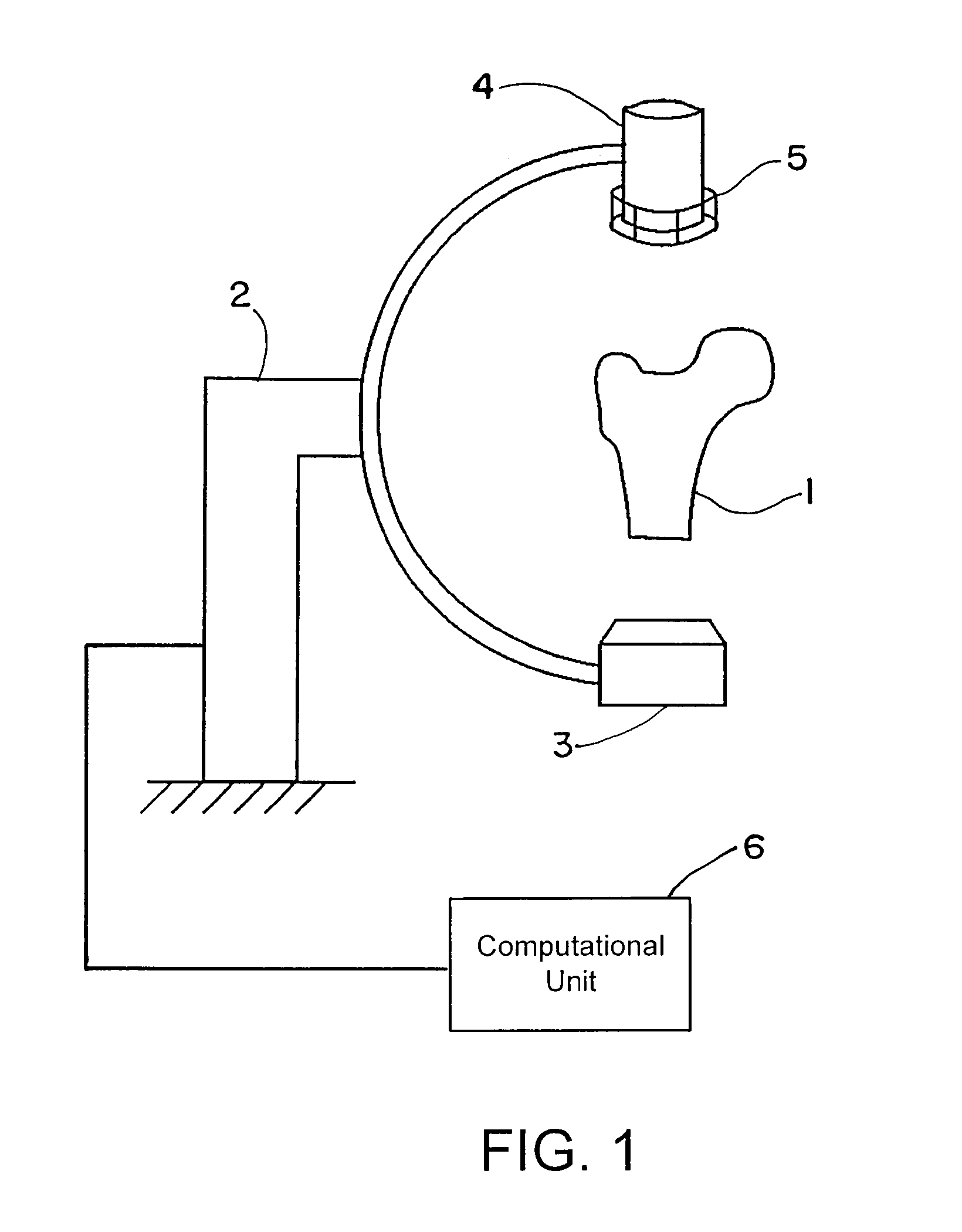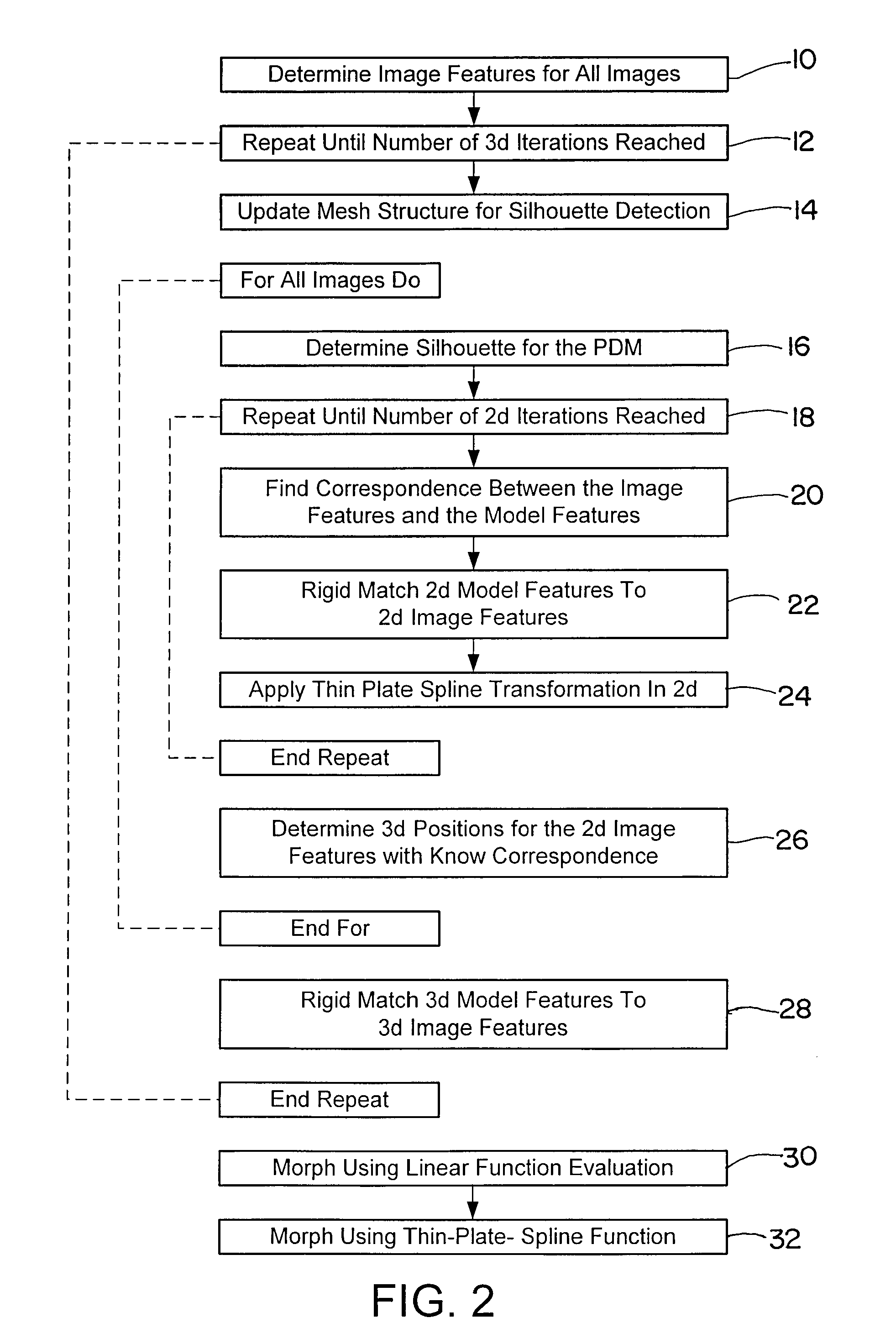Shape reconstruction using x-ray images
a technology of x-ray images and shape reconstruction, applied in the field of medical imaging, can solve the problems of increasing the radiation load on the patient, high cost of devices, and system lack of the required accuracy for the respective patient to be treated, and achieve the effect of suppressing spurious edges and greatly speeding up the extraction process
- Summary
- Abstract
- Description
- Claims
- Application Information
AI Technical Summary
Benefits of technology
Problems solved by technology
Method used
Image
Examples
Embodiment Construction
[0058]FIG. 1 shows an exemplary C-arc apparatus that can be used to obtain patient-specific X-ray images. An anatomic structure of interest, e.g., the proximal femur 1 of the patient, can be placed in the imaging unit 2. This imaging unit 2 may include a radiation source 3 and a detection device 4. A calibration device 5 connected to the detection device 4 can be used to determine the imaging parameters. The calibration device 5 may be placed anywhere between the radiation source 3 and the detection device 4, and attachment to the detection device is merely exemplary. Operatively coupled to the C-arc apparatus is a computational unit 6 that executes the algorithm described herein.
[0059] The image(s) obtained from the imaging device 2 can be used as input for the algorithm of FIG. 2 and executed by the computational unit 6. Beginning at block 10, image figures such as the shape, contour, outline or edge or gradients may be determined for all obtained two-dimensional images. At block...
PUM
 Login to View More
Login to View More Abstract
Description
Claims
Application Information
 Login to View More
Login to View More - R&D
- Intellectual Property
- Life Sciences
- Materials
- Tech Scout
- Unparalleled Data Quality
- Higher Quality Content
- 60% Fewer Hallucinations
Browse by: Latest US Patents, China's latest patents, Technical Efficacy Thesaurus, Application Domain, Technology Topic, Popular Technical Reports.
© 2025 PatSnap. All rights reserved.Legal|Privacy policy|Modern Slavery Act Transparency Statement|Sitemap|About US| Contact US: help@patsnap.com



